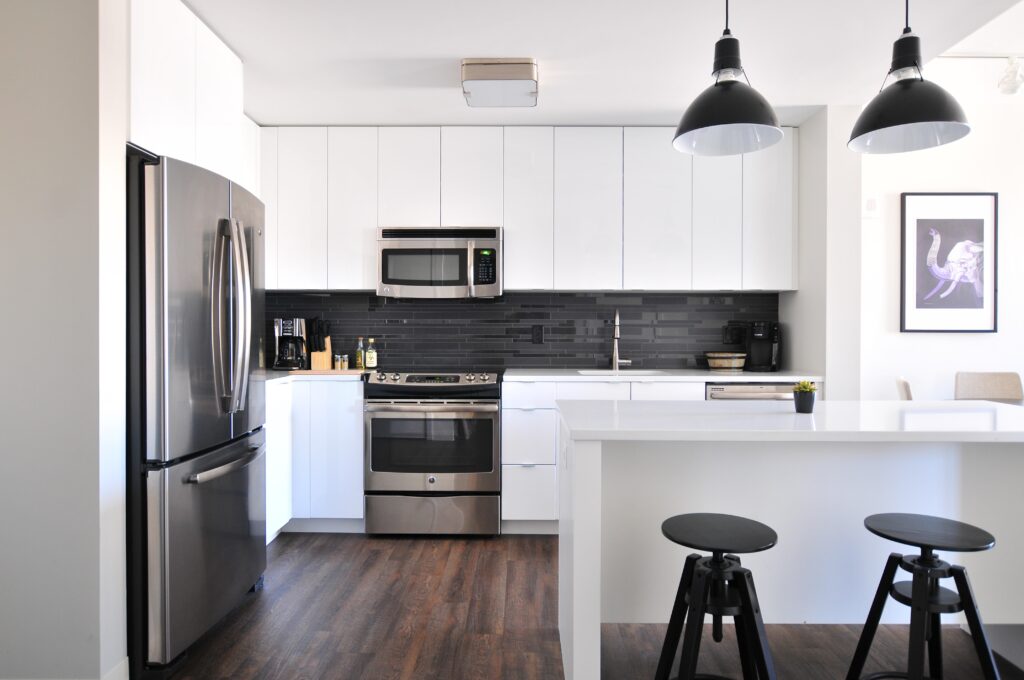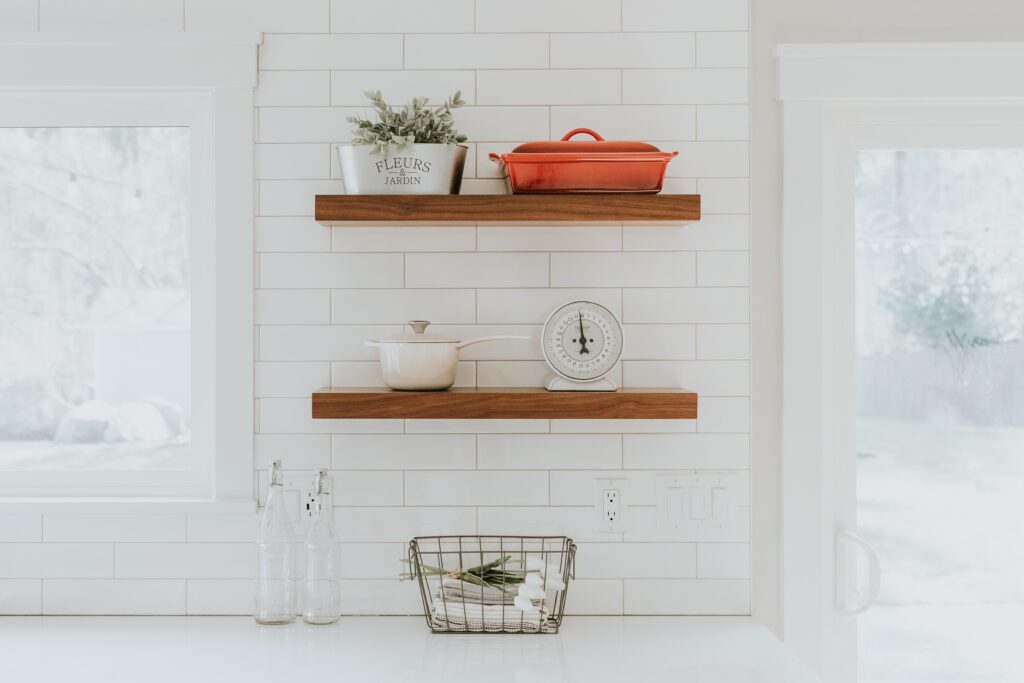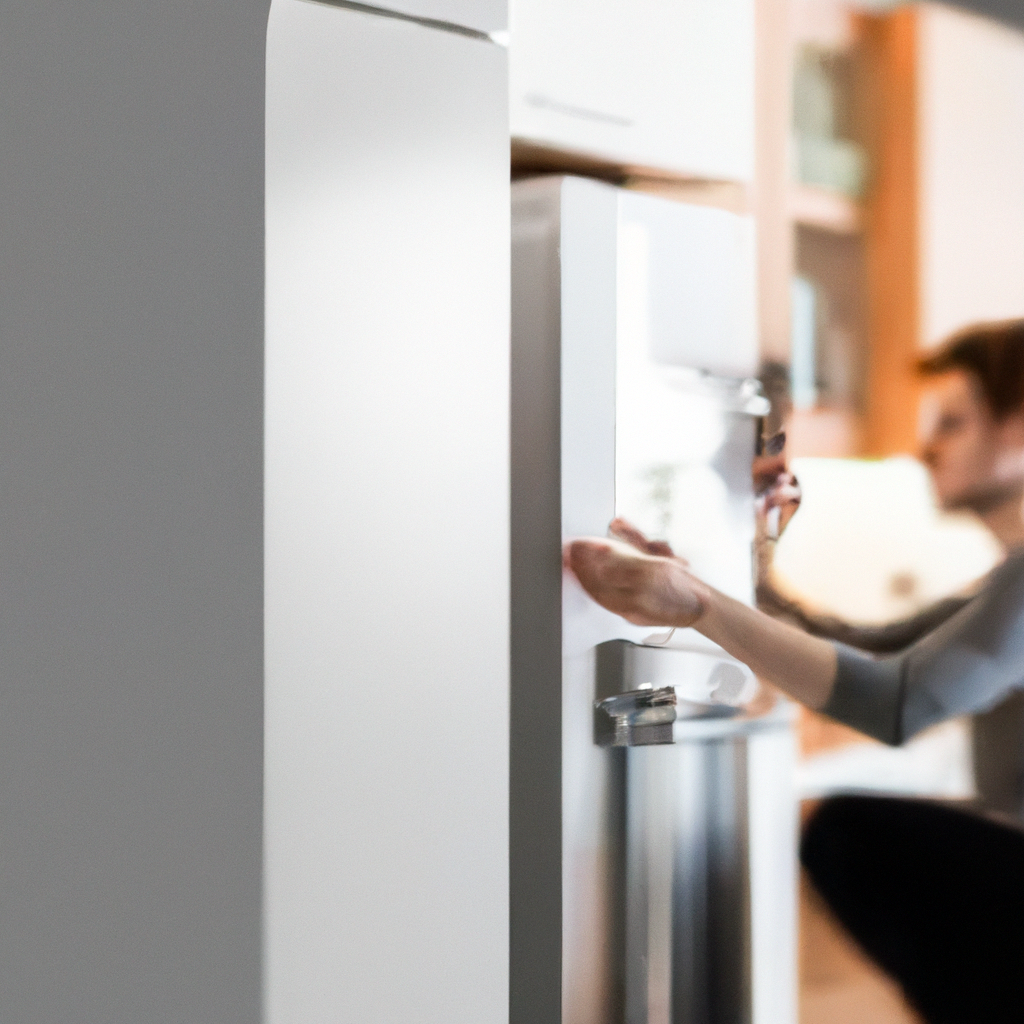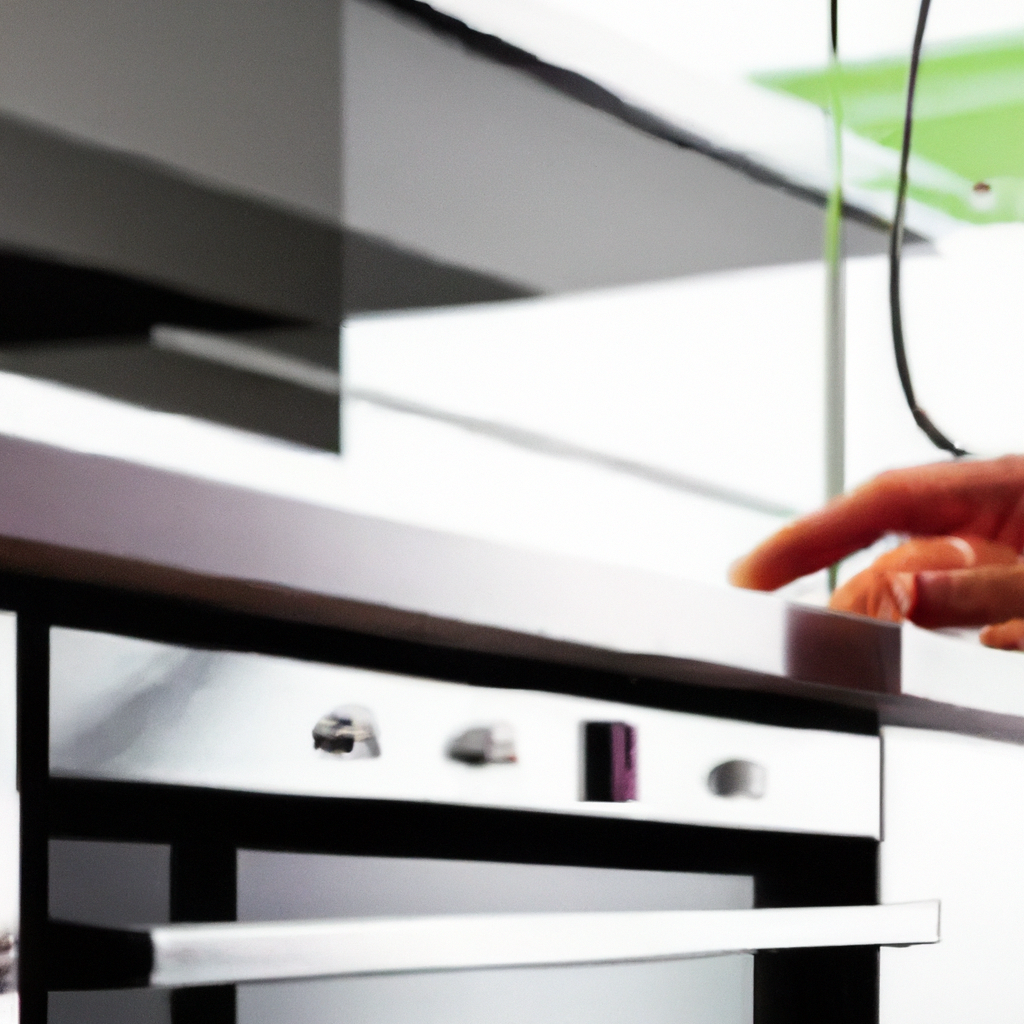Imagine the convenience of having your kitchen appliances seamlessly integrate into your daily routine. From smart ovens that preheat before you even step foot in the kitchen, to voice-activated coffee makers that brew your favorite cup of joe the moment you wake up, the possibilities are endless. In this article, we will explore the simple steps you can take to set up and integrate these smart kitchen devices, making your cooking and food preparation tasks a breeze. Say goodbye to time-consuming tasks and hello to a more efficient and enjoyable kitchen experience!
1. Understanding Smart Kitchen Devices
1.1 What are Smart Kitchen Devices?
Smart kitchen devices are innovative appliances, cookware, utensils, and gadgets that are equipped with advanced technology and connectivity features. These devices are designed to make your kitchen tasks more efficient, convenient, and enjoyable. They can be controlled remotely through smartphones or integrated with virtual assistants, allowing you to have greater control and automation in your kitchen.
1.2 Benefits of Smart Kitchen Devices
Smart kitchen devices offer a range of benefits that can greatly enhance your daily kitchen routine. One of the key advantages is time savings. With the automation and remote control features of these devices, you can prepare meals more quickly and easily. Smart devices can also help you save energy and reduce food waste by optimizing cooking times and monitoring food storage conditions.
Another major benefit is the convenience they provide. With the ability to control and monitor your kitchen devices remotely, you can start cooking while you’re still at work or adjust settings without leaving your couch. Some smart devices even offer voice control integration, allowing you to simply command your devices to perform certain tasks, making your cooking experience more hands-free and effortless.
1.3 Popular Types of Smart Kitchen Devices
There is a wide variety of smart kitchen devices available on the market, catering to different needs and preferences. Among the popular types are smart appliances, smart cookware and utensils, and smart kitchen gadgets.
Smart appliances include refrigerators, ovens, microwaves, dishwashers, and coffee makers. These appliances are equipped with smart features such as remote control, energy monitoring, and customizable settings. Smart cookware and utensils, on the other hand, encompass products like smart pans, smart scales, and smart kitchen tools. These devices can provide accurate measurements, temperature control, and even cooking guidance through integrated mobile apps.
Smart kitchen gadgets include devices like smart thermostats, smart kitchen monitoring systems, and smart voice assistants. These gadgets can help you monitor and control the temperature, humidity, and air quality in your kitchen, as well as provide recipe recommendations and cooking timers.
2. Assessing Your Daily Kitchen Routine
2.1 Analyzing Your Current Kitchen Tasks
Before diving into the world of smart kitchen devices, it’s important to assess your daily kitchen routine. Take some time to observe and make a list of the tasks you perform regularly in your kitchen. This might include meal preparation, cooking, cleaning, and food storage.
2.2 Identifying Pain Points and Areas for Improvement
Once you have a clear understanding of your current kitchen routine, identify any pain points or areas where you feel there is room for improvement. This could be anything from spending too much time on meal preparation to struggling with accurate measurements. By pinpointing these pain points, you can focus on finding smart kitchen devices that specifically address these challenges.

3. Researching Available Smart Kitchen Devices
3.1 Exploring Smart Appliances
When researching smart kitchen devices, start by exploring the range of smart appliances available. Look for appliances that align with your needs and preferences. Consider features such as remote control, energy efficiency, and compatibility with other smart devices in your home. Read customer reviews and ratings to get a sense of the performance and reliability of the appliances you are interested in.
3.2 Considering Smart Cookware and Utensils
In addition to appliances, there is a wide selection of smart cookware and utensils to choose from. These devices can enhance your cooking experience by providing precise measurements, temperature control, and recipe guidance. Consider your cooking style and the types of meals you prepare regularly when selecting smart cookware and utensils. Look for devices that are compatible with mobile apps or hubs that offer customization options and cooking guidance.
3.3 Examining Smart Kitchen Gadgets
Smart kitchen gadgets offer additional functionality and convenience in your kitchen. From smart thermostats that regulate the temperature in your refrigerator to smart voice assistants that can read out recipes and set timers, there are plenty of options to explore. Review the features and compatibility of each gadget, and consider how they can integrate with the other smart devices you have or plan to purchase.
4. Planning Your Budget and Prioritizing Purchases
4.1 Setting a Budget for Your Smart Kitchen
Before making any purchases, it’s important to set a budget for your smart kitchen. Consider how much you are willing to invest in upgrading your kitchen devices and appliances. Keep in mind that smart kitchen devices tend to be more expensive than their conventional counterparts, but they also offer a range of additional features and benefits.
4.2 Prioritizing Essential Smart Devices
With your budget in mind, prioritize the essential smart devices that will have the most significant impact on your kitchen routine. Focus on the pain points and areas for improvement you identified earlier. For example, if you struggle with accurate measurements, prioritize a smart scale or smart measuring cups. If you often forget to turn off appliances, consider investing in a smart power strip or smart plugs. By prioritizing your purchases, you can make the most effective use of your budget.

5. Preparing Your Kitchen for Integration
5.1 Ensuring Adequate Wi-Fi Coverage
Since smart kitchen devices rely on Wi-Fi connectivity, it’s crucial to ensure that your kitchen has adequate Wi-Fi coverage. Check the signal strength in your kitchen and consider extending your Wi-Fi network if necessary. A strong and stable Wi-Fi connection is essential for seamless operation and control of your smart devices.
5.2 Organizing and Decluttering Your Kitchen
Preparing your kitchen for integration involves decluttering and organizing your space. Clear out any unnecessary items, reorganize your cabinets and drawers, and create designated areas for your smart kitchen devices. This will not only make your kitchen more functional but also ensure that your smart devices have the space they need to operate efficiently.
5.3 Assessing Power Supply and Outlets
Smart kitchen devices require a power supply, so it’s important to assess the availability of outlets in your kitchen. Determine if you have enough outlets to accommodate your smart devices and consider investing in power strips or surge protectors if needed. This will ensure that all your devices can be powered and connected without causing any electrical hazards.
6. Installing and Setting Up Smart Appliances
6.1 Checking Compatibility and User Reviews
Before installing smart appliances, it’s crucial to check their compatibility with your current kitchen setup. Ensure that the appliances you choose can be seamlessly integrated with other smart devices in your home. Additionally, read user reviews and ratings to get insights into the installation process and any potential challenges or issues that other users may have encountered.
6.2 Following Manufacturer’s Instructions
When installing smart appliances, it’s important to carefully follow the manufacturer’s instructions. Each device may have specific installation requirements and steps, so make sure to read and understand the instructions thoroughly. This will help ensure that your appliances are set up correctly and ready for integration into your daily routine.
6.3 Connecting to Wi-Fi and Configuring Settings
After installation, connect your smart appliances to your Wi-Fi network. Follow the instructions provided by the manufacturer to establish the connection. Once connected, access the device’s settings to configure any personalized options, such as temperature settings, cooking presets, or energy-saving modes. Taking the time to customize these settings will maximize the benefits you can derive from your smart appliances.
6.4 Updating Firmware and Software
To ensure optimal performance and security, it’s important to keep your smart appliances’ firmware and software up to date. Check for any available updates regularly and follow the manufacturer’s instructions to install them. By staying up to date with the latest firmware and software versions, you can benefit from bug fixes, performance improvements, and new features that are released by the manufacturer.

7. Integrating Smart Cookware and Utensils
7.1 Syncing Devices with Mobile Apps or Hubs
To integrate your smart cookware and utensils into your daily routine, start by syncing them with the corresponding mobile apps or hubs. Download the required apps on your smartphone and follow the instructions provided by the manufacturer to establish the connection. This will allow you to monitor and control your smart cookware and utensils remotely, giving you greater flexibility and convenience in the kitchen.
7.2 Calibrating and Customizing Smart Cookware
To ensure accurate measurements and optimal performance, it may be necessary to calibrate your smart cookware and utensils. Follow the manufacturer’s instructions to calibrate these devices according to your preferences and cooking style. Additionally, take the time to customize any settings or presets available through the apps or hubs to tailor the devices to your specific needs.
8. Exploring Automation and Voice Control
8.1 Setting Up Routines and Automations
One of the major benefits of smart kitchen devices is their ability to automate certain tasks and routines. Take advantage of this feature by setting up routines and automations based on your daily kitchen activities. For example, you can create a morning routine that starts brewing your coffee and preheats the oven as soon as you wake up. Explore the automation options available through the mobile apps or hubs of your smart devices and customize them to streamline your kitchen routine.
8.2 Voice Control Integration with Virtual Assistants
If your smart devices support voice control integration, consider connecting them to a virtual assistant such as Amazon Alexa or Google Assistant. This will allow you to control your devices using voice commands, making your kitchen experience even more hands-free and convenient. Set up the integration according to the instructions provided by the device manufacturer and enjoy the benefits of voice-controlled cooking and meal preparation.

9. Learning to Use and Optimize Smart Kitchen Devices
9.1 Reading Manuals and Tutorials
To make the most of your smart kitchen devices, take the time to read the manuals and tutorials provided by the manufacturers. Familiarize yourself with the features, settings, and functionalities of each device. Understanding how to use your smart devices properly will help you optimize their performance and make them an integral part of your daily kitchen routine.
9.2 Experimenting and Familiarizing Yourself
In addition to reading the manuals, it’s essential to experiment and familiarize yourself with your smart kitchen devices. Start by gradually incorporating them into your daily routine and explore the various functions and settings. Try different recipes, cooking methods, and customization options to find the combinations that work best for you. As you gain more experience and confidence, you’ll discover new ways to leverage the capabilities of your smart devices.
10. Troubleshooting and Maintenance
10.1 Troubleshooting Common Issues
While smart kitchen devices are designed to be user-friendly, occasional issues may arise. Familiarize yourself with common troubleshooting techniques to address any problems you may encounter. Consult the troubleshooting section of the device manuals or reach out to customer support for guidance. By promptly addressing issues, you can minimize any disruptions to your kitchen routine.
10.2 Regular Cleaning and Maintenance
Maintaining your smart kitchen devices is important to ensure their longevity and optimal performance. Follow the manufacturer’s instructions for cleaning and maintenance to keep your devices in good condition. Regularly clean surfaces, check for any wear and tear, and replace any worn-out parts as necessary. By taking care of your smart kitchen devices, you can enjoy their benefits for years to come.
In conclusion, setting up and integrating smart kitchen devices into your daily routine can greatly enhance your kitchen experience. By understanding the different types of smart devices, assessing your needs and budget, preparing your kitchen for integration, and optimizing the use of your devices, you can streamline your kitchen tasks, save time and energy, and enjoy greater convenience and control. With proper research, planning, and familiarization, you’ll be well on your way to creating a smart and efficient kitchen that meets your needs and preferences.











